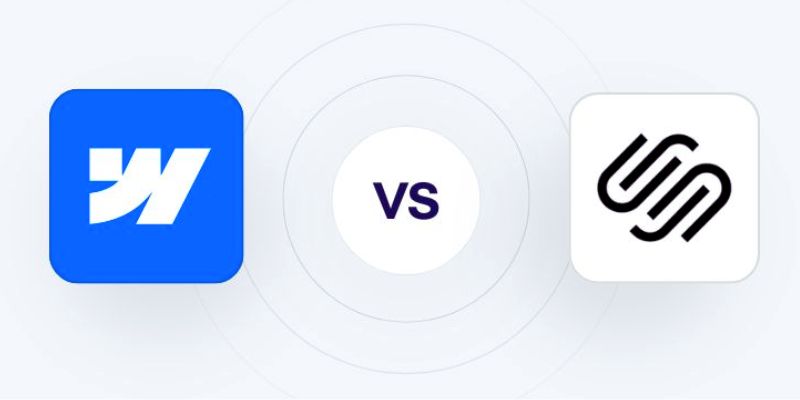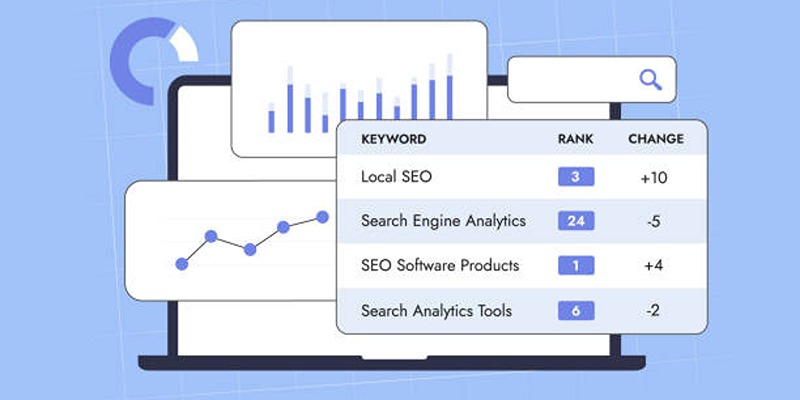Webflow vs. Squarespace: Which Website Builder is Best for Your Business
Advertisement
In the modern digital environment, building a website for your company is absolutely vital. A website advances reputation, increases brand development, and helps you attract more clients. However, given the abundance of website builders on the market, selecting the correct one might seem challenging. Two well-liked choices are Webflow and Squarespace, which provide special qualities that enable you to design a magnificent website.
While Squarespace is commended for its simplicity and elegant templates, Webflow is well-known for its advanced design versatility. Both systems have advantages and drawbacks, so choosing between them can prove difficult. This article will help you decide which of Webflow and Squarespace best suits your company. We will examine pricing, features, design adaptability, and more to guide your choice.

Pricing: What's More Affordable for Your Business?
Selecting a website builder relies much on pricing. One should take into account the differing pricing structures of Webflow and Squarespace. Although Webflow has a free plan, you will have to upgrade to a paid one for more features. Its subscription options start at $14 a month for basic website capabilities and rise based on your requirements, such as e-commerce capability.
Conversely, Squarespace provides a 14-day free trial, but you will have to choose a premium plan if you wish to keep using their platform. For personal websites, Squarespace charges $12 a month; higher-tier options are offered for e-commerce and additional capabilities. For consumers just starting, especially for smaller companies or those with simple website requirements, Squarespace generally provides more reasonably priced solutions.
Ease of Use: Which One is More User-Friendly?
Selecting a website builder depends much on ease of use. Squarespace is the better option if you are a novice or have minimal to no web design knowledge. One easily navigable drag-and-drop interface available from Squarespace comes from. The pre-designed themes let you rapidly establish a professionally looking website. Those who prefer a quick, hassle-free website setup will find it a favorite because of its simplicity.
Although strong, web flow has a longer learning curve. Users who wish to develop extremely customized websites or have knowledge of web design will find it more appropriate. Though they are strong design tools in Webflow, beginners may find them daunting. It loses simplicity but offers more control over design aspects. Webflow will provide additional versatility if you wish total control and are confident with design tools.
Design Flexibility: Which Platform Offers Better Creative Control?
Webflow is the obvious champion in design flexibility. With Webflow's many customizing choices, you may create your website precisely how you wish. Perfect for companies seeking a distinctive website design, it allows you to change the layout, animations, and other components. Squarespace is less adaptable, even if it provides lovely designs. Although its designs are quite sleek and professional, there are few customizing choices.
Though you can change some elements of the design—such as fonts and colors—the general arrangement stays the same. Webflow is the preferable option if you require a customized design. Squarespace provides a simple answer for those who want a sleek website devoid of much personalization.

E-Commerce Features: Which One is Better for Selling Online?
Though they serve distinct kinds of companies, Webflow and Squarespace both provide e-commerce capabilities. Squarespace provides all the fundamental instruments you need to establish an online store, including inventory control, product pages, and connection with payment gates. It provides everything small businesses or people just starting to need to launch an online store.
Webflow's e-commerce capabilities are increasingly developed. It enables a more customized shopping experience and more depth of customization of product pages. For companies requiring sophisticated e-commerce capabilities like advanced integrations with other tools or custom checkout systems, Webflow is more appropriate. Although Webflow's e-commerce capabilities are more costly, they are usually more appropriate for companies with more demand. Regarding simple e-commerce, Squarespace is more reasonably priced and easily available.
SEO and Marketing: How Well Can You Optimize Your Website?
Effective search engine optimization (SEO) is essential for achieving a high ranking on search engines. Though Webflow provides more thorough control, both Webflow and Squarespace include SEO tools to help maximize your site. Webflow lets you change meta tags, URLs, and other SEO parameters on every page, increasing your freedom to optimize your site for search engines.
Though they are more limited than Webflow, Squarespace provides easily navigable built-in SEO capabilities. It provides basic SEO settings, such as meta descriptions and titles, but offers less control over advanced features. The SEO features of Squarespace are enough for novices. Webflow is a superior option, but if you know about SEO or wish to improve your website more precisely,
Customer Support: Which Platform Offers Better Assistance?
When selecting a website builder, you want consistent customer support should something go wrong. Squarespace offers 24/7 customer support via live chat and email for users who need assistance. It also boasts a sizable knowledge base and community forums where one may find solutions to often-asked topics. Although Webflow offers client help as well, its emphasis is on questions connected to design and development.
Although Webflow's support is useful, it isn't as broad as Squarespace's. Webflow has a community forum, online classes, and a comprehensive help center, but you might not have the same degree of direct assistance as you would have with Squarespace. Squarespace is the superior choice for everyone who appreciates thorough customer service. It provides a wide spectrum of resources and more sensitive help.
Conclusion:
Your particular requirements will determine which website builder best fits your company. Squarespace is the solution if you wish for a simple platform with great designs and a quick setup. Small enterprises or individuals will find it ideal and reasonably priced. Webflow is the preferable option, but it is also preferable if you require more comprehensive e-commerce capabilities, greater design flexibility, or more deep customization. Businesses who wish complete control over the appearance and functioning of their website will find it perfect. Your budget, technical ability, and design taste will ultimately determine the best platform for your company.
On this page
Pricing: What's More Affordable for Your Business? Ease of Use: Which One is More User-Friendly? Design Flexibility: Which Platform Offers Better Creative Control? E-Commerce Features: Which One is Better for Selling Online? SEO and Marketing: How Well Can You Optimize Your Website? Customer Support: Which Platform Offers Better Assistance? Conclusion:Advertisement
Related Articles

Top ActiveCampaign Alternatives to Try in 2025 for Smoother Workflows

Slack vs. Discord: Choosing the Right Tool for Your Workspace

The 12 Best Digital Marketing Tools in 2025 to Amplify Your Strategy

The 10 Best Email Drip Campaign Software in 2025 to Automate Your Outreach

The Best Free Small Business Software in 2025 to Run Smarter, Not Harder

The Tool Debate: Browser-Based or Installed

The 6 Best AI App Builders in 2025 for Fast, No-Code Development

The 7 Best Client Management Apps in 2025 for Smoother Workflows and Happier Clients

The 8 Best AI Meeting Assistants in 2025 to Save Time and Stay Organized

The Best AI Chatbots in 2025 to Power Conversations and Save Time

Slack vs. Teams: Which Should Your Business Use for Better Collaboration

 lameuplay
lameuplay